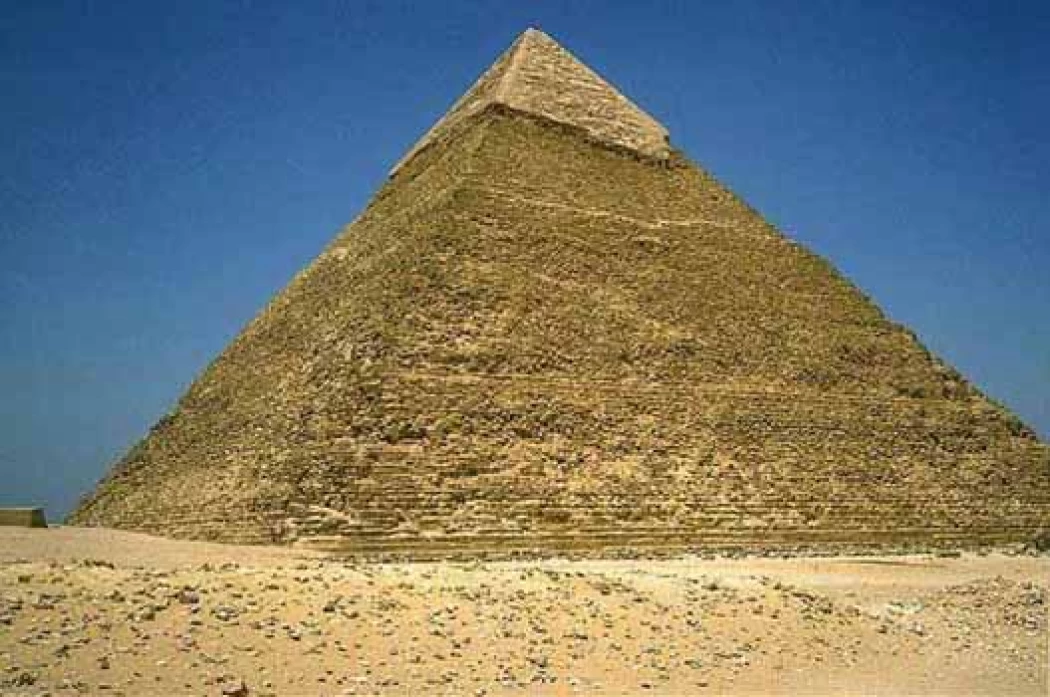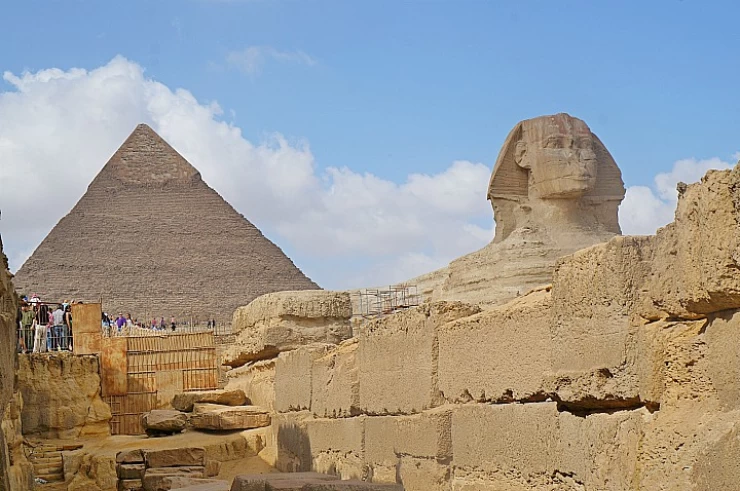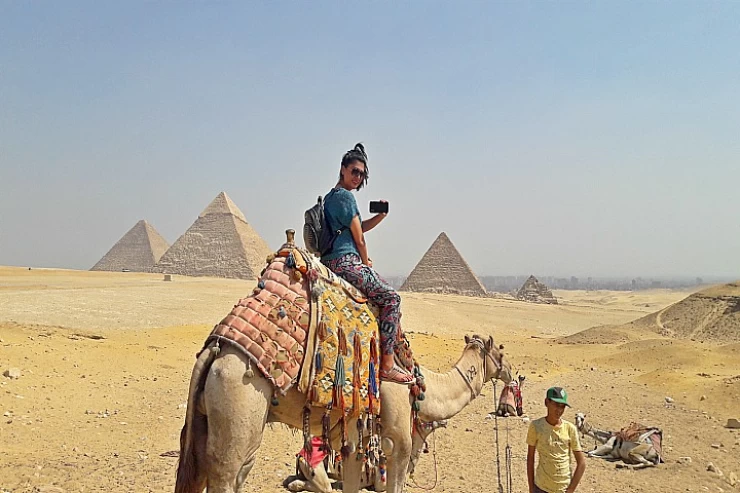
King Cheops | King Khufu | Owner of the Great Pyramid
Facts About King Cheops
The Great Pyramid dates back to around 2500 BC and marked a significant civilizational transition in ancient Egyptian history; King Khufu was influenced by his father King Sneferu at the time of building his pyramid which later on after his death resulted into God Khufu becoming King Horus the Earthly ruler. This made it imperative for him to consider constructing his tomb which was the very first ever national project and its construction saw professional laborers from various parts of Egypt coming together. The Great Pyramid held its original height “148 meters” for approximately 3800 years making it the tallest structure ever created by man.
The report drew attention to the fact that until now no one has been able to know for sure how these rocks were transported there or in what manner they were arranged and aligned into this shape and height etc., furthermore, pyramids were originally covered with white smooth limestone layer which reflects sun rays. In the morning this makes them look like gold to a spectator while their inner temperature never exceeds 20 degrees Celsius regardless of outside weather conditions due to unique designs that maintain these unchanged temperatures within.
The Turin Papyrus set the period of his reign at twenty-three years, but a text was found in the “Abu Balas” area in the Western Desert that mentions the visit of a senior statesman in the twenty-seventh year of King Khufu's reign, suggesting that his reign extended to this period and was not limited to the period specified by the Turin Papyrus as the period of this king's reign.
His personality was also associated with the story of his pyramid, as some believe that Khufu, by building this miraculous pyramid, has harnessed his people to this work and is therefore an unjust king, as Herodotus narrated, that the construction of the pyramid took twenty years of oppression of the people and that the ascending road took ten years, that is, the total is thirty years.
But the truth is that the work in the pyramid was done through one hundred thousand workers annually over thirty years who worked only in the four months of the flood, as agriculture was the main craft of the ancient Egyptian, and thus he provided his people with opportunities to work in a time of no work, and therefore King Khufu is the first king to insure his people against unemployment.
That he took part in their removal. Moreover, it is believed that under this sovereign’s reign many temples were constructed while agriculture prospered as indicated by the inscriptions on several walls. According to Casterns (1954), he was able to accomplish all this because he possessed a great amount of resources in terms of manpower, money and land. He made great contributions to architecture by building the Giza pyramids which are classified among the seven wonders of the ancient world (Dorman 24).
As for other achievements made by King Khufu during his rule were active trading activities with neighbouring nations’ that were characterized by exchange trade between commodities that came from Egypt and those from such countries as Phoenicia (Lebanon) and Cyprus. He also promoted marine transport along with agriculture. Moreover, much is said about King Khufu’s extensive mining operations hence many precious stones that were removed from mines found appearance in most royal tombs erected then (Meresankh’s tomb). Such accomplishments are attributed to need for building large and stable projects including temple pyramids where some of these activities happened or involved massive quantities of materials which these building yards used for production purpose.
These documents also make it clear that those who helped build the pyramid had done so because they felt they had to do it voluntarily since, according to ancient Egyptian belief, the king was believed to be the one who guaranteed the fate of his subjects in the afterlife. Therefore, common people were required to honor their king in various ways so that they could have his aid thereafter; building a pyramid for him could be one such way. Among King Khufu’s monuments is the Great Pyramid built at Giza “which is among the seven wonders,” and it took around twenty years to complete it with its height measuring146metres…out of which nearly nine metres have been eroded by natural factors and outer cladding stones pulled out leaving only a little stone at its top …that is why there is said that this pyramid belonging to King Khufu contains very small statue (nine centimeters maximum) found very few times in Abydos only remnants of his found in Cairo museum.
He also built an Egyptian temple in Byblos and other trade blossomed both during Khufu's reign between Egypt and Lebanon while his name was found on some stones from the Western Desert quarries confirming he took part in their removal (as cited by the article "The Reign of Khufu" on page 273). In addition, many temples were constructed under this sovereign, while agriculture flourished as indicated by inscriptions on several walls according to Castens (1954) who asserts that he managed to do all this because he had abundant resources including human labor force, financing power and land parcels at disposal. Hencesuch constructions earned him great recognition such as founding Giza pyramids which are regarded as among the seven wonders of antiquity (Dorman 24).
At present, the Great Pyramid stands as an assurance of Khufu's vision and the ingenuity of the ancient Egyptian civilization. Whether it is divine supremacy or a human marvel, such grandiosity and mysterious features in this grand work draw millions of people who marvel at its bared beauty and the secrets it keeps within.
Although the reign of King Khufu ended over 4,500 years ago, his very shadow is felt through time and ensures that he remains one of the most enigmatic and most ambitious rulers of ancient Egypt.
Contrary to his gigantic pyramid, not much is known about the personality of Khufu. His ruling has been reported in varied ancient sources: while some describe him as a stern and despotic king, others report him as a just and god-fearing leader. The only extant life-size statue of Khufu, carved in ivory, has been discovered from Abydos and serves as rare evidence of the appearance of this ruler.
It can be so difficult to imagine such an immense structure; the fact that the whole of London's parliament and Saint Paul's Cathedral could be contained there comfortably may perhaps help you get an idea.
Napoleon Bonaparte, the passionate admirer of Egyptian antiquities, was so impressed by his visit to the plateau of Giza that (thanks to the help of his mathematicians) he was able to officially announce that in the three pyramids, there was enough stone to build a three-meter-high wall that surrounded the whole territory of France.
The Great Pyramid is, among all, the one aligned most precisely. It is clear that the orientation had to be very important for engineers and supervisors. However, we do not know for sure if such precision was a practical response to the Bent Pyramid in Dahshur and Meidum accidents, or if at the base there was simply a religious need that made it necessary to align the funeral chamber (and consequently the body of the deceased pharaoh).
Here, Cheops was to be buried for eternity in his Aswan red granite sarcophagus. However, some Egyptologists believe that all three rooms were part of the original plan; in particular, the "Queen's Chamber" would have served as a serdab room, in which a statue of the late pharaoh was to serve as a substitute for his body. Five rooms were built above the "King's Chamber" to lighten the structure, an innovation that served to distribute the load of the pyramid that would otherwise have overloaded the ceiling of the burial chamber. Without worrying about understanding the key terms of Egyptian history, we will see an Egyptologist guide, who will meet your expectations.


















